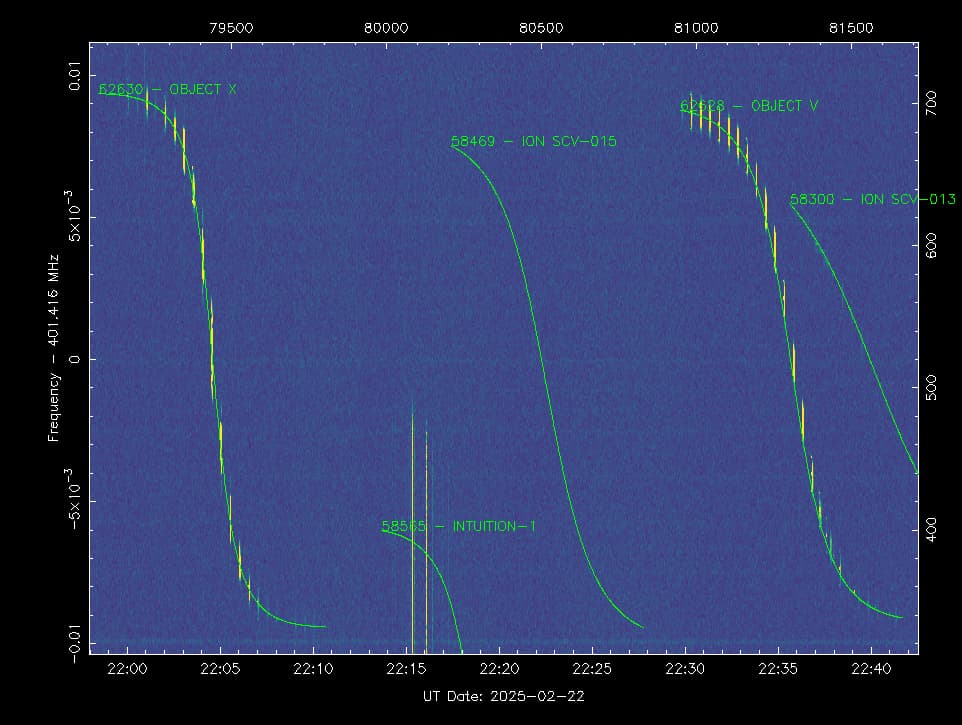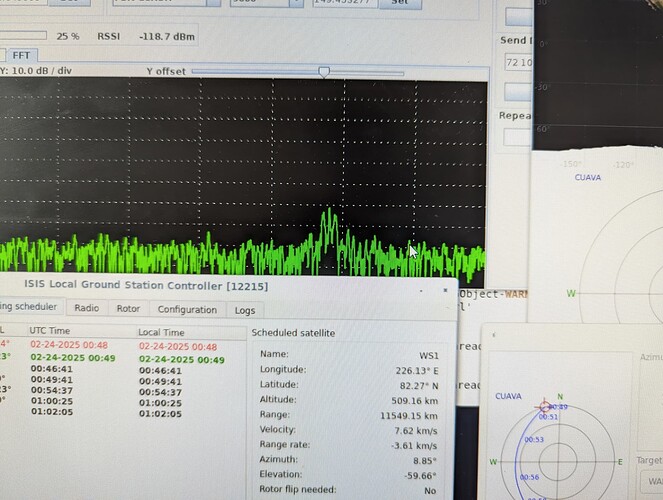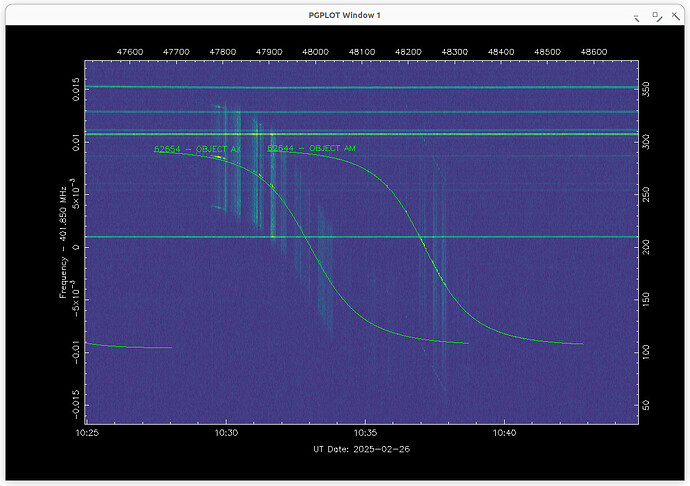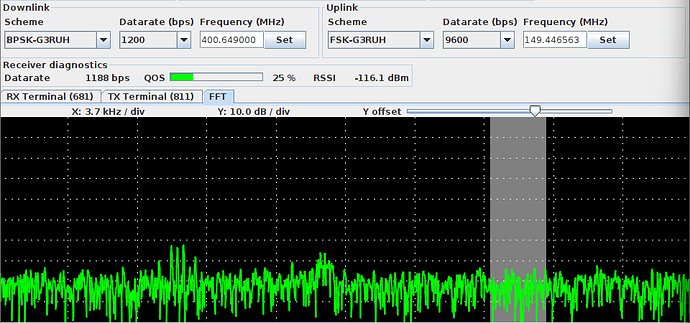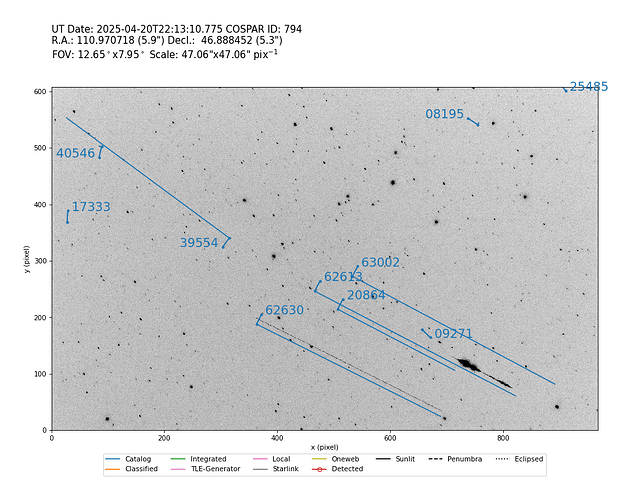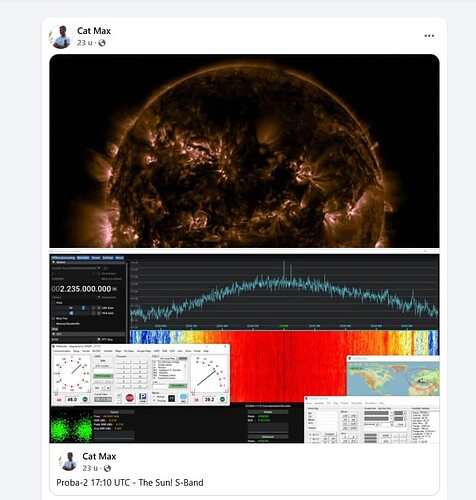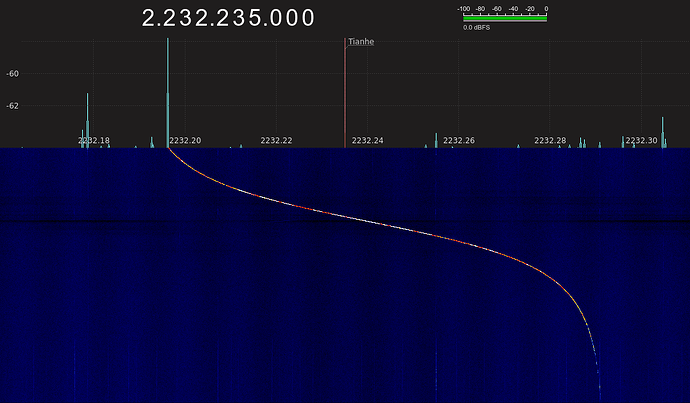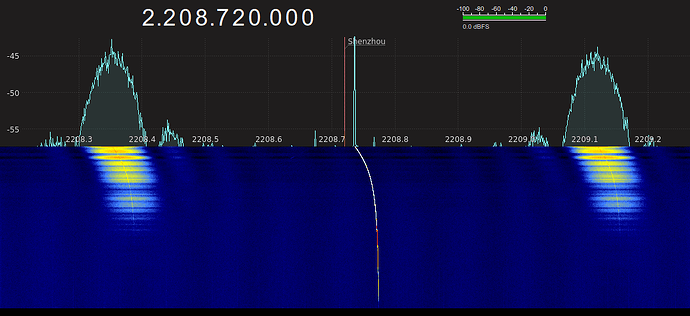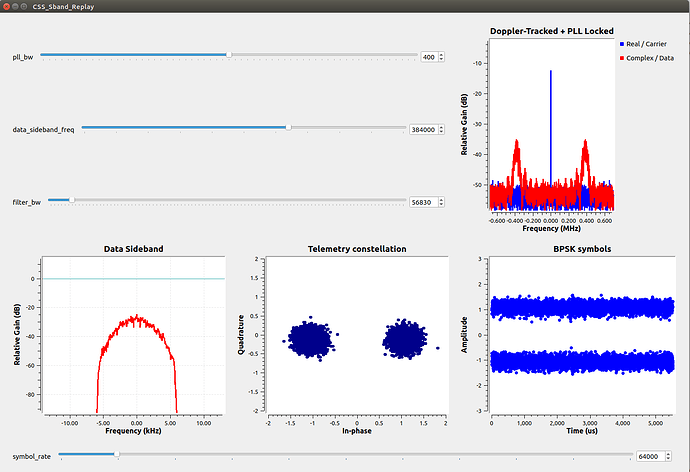I don’t have anything authoritive. The satnogs database for temporary NORAD ID 98659 has a suggestion with some more information (not made by me).
Thanks, so we have an unknown satellite transmitting at 400.200 with 9k6 FSK and AX.25 framing.
It would already be helpful if we know the AX25 call used, looking at the decodes this object is using GRAF1N
We’re still receiving a continuous signal on 400.65MHz at our groundstation that correlates with AlAinSat-1’s orbit. Can you confirm that this is AlAinSat-1? Or if not is there any other satellite that I’m unaware off that would be sending on this frequency and recently launched?
I’ve scheduled a couple of observations in Network to check it, thanks for the info!
In over 48 hrs of strf recording I have no signal from 62637 nor any unidentified signal on that frequency ( 400.650 MHz)
Maybe it transmits only over specific areas at that frequency.
Thanks for checking @pe2bz
Hmm, I’ll keep a look out if we’re still seeing it.
Can you try again with 62688, this is ALAINSAT-1 on Celestrak?
Just saw it again at our Groundstation in Sydney, but the signal seems to be correlating better with Object-AM, 62644.
following 62644 over Em12jw - no signals observed on 400.850. Will try 400.650 next.
/b
It looks like that the satellite at 400.650 that follows object 62688 is Bluebon.
We also have two unknown satellites at 401.850 MHz, one following the object 62654 and the other the object 62644. One of them should be ANSER Leader-S but we are not sure which one, for now in DB we follow randomly 62644 as ANSER Leader-S and we also have added the object 62654.
Thanks at @pe2bz for sharing the strf observations:
By checking ANSER Followers satellites, 62644 signal looks similar to their transmissions in contrast with 62654 which is narrower signal. Thus I’m 99% sure that 62644 is ANSER Leader.
I’ve scheduled a couple of observations for 62654 in Network, let’s see if we can manage to find which one is it.
We’re now expecting the interfering satellites to be FLOCK 4G, because we’re still seeing interference daily, no single satellite matches the orbits we’re seeing and recently we found that sometimes there’s more than 1 interference source.
Does anyone have any information on their licensing?
62705 ID’d ICEYE-X45 on 2263.500 , to be suggested to DB later tomorrow.
62698 ICEYE-X42 on 2276 MHz first time catch waiting for confirmation pass
Here is an optical observation of some Transporter-12 satellites:
62630 ION SCV-014
62613 FLOCK 4G 8
The IONs and FLOCKs are often visible in the images. This Flock gave a nice flare.
63002 OBJECT DM was not visible, and should be smaller.
20864 CZ-4 DEB is a invisible debris piece of another launch, that happened to pass the view at the same time. Given the shorter predicted trace, it should be at an higher altitude.
The image was taken with a ASI-178 camera and a 50mm F1.4 lens. Processed with STVID.
Hi Ben and All.
I’ve got an S-band ground station set up—wondering if you know of any satellites I can try receiving raw downlink data from? Also, do you happen to have any decoders available that I could test with?
Equipment: HackRF one with SDR Console, 2m mesh antenna with down converter.
I appreciate just let me know if any software I need.
Thanks!
Hi Randson, (name found on qrz.com )
Nice to see another S-band groundstation being set up , especially in a region with not that much S-band receivers ![]()
I am not into decoding signals, so I usually do not register if a signal from (S-band) satellites can be decoded. However, on the Facebook APT image group I notice some posts from the sun which are transmitted by the / a Proba Sattellite, so those transmit something that can be decoded with the right setup.
For some info I paste an image from yesterday from the APT Group, you might want to join and look for info about the software (looks like satdump can decode ?) and which actual Proba satellite to look for.
Best of luck,
Ben
While there is nothing to decode from just the center carrier, if you would like some (very) strong S-Band signals to observe to test your setup, the CSS (Norad # 48274) downlinks on numerous S-Band frequencies.
As an example, here is an entire pass from my 1-meter mesh dish:
… there are data sidebands farther out (384 kHz) to either side. So, if you would like a more difficult challenge, monitor a wider portion and (if all is well), those will be visible to you also. Encrypted, of course, but still a nice test of your setup:
Congrats on the new setup!
Best regards,
Scott, K4KDR
